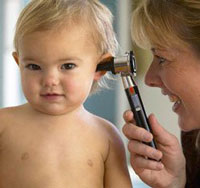Lynn Andrick knelt down at eye level with the group of excited preschoolers Thursday morning, mirroring their smiles as they clutched their baskets, ready to hunt for eggs.
“We want to have nice hands. No pushing. And no running because you might fall down. We want everyone to have fun and be safe!” Andrick said cheerfully to the attentive students.
It was the same instructions any adult may give a group of children; the only difference on Thursday was that, in addition to speaking these instructions to the preschoolers, Andrick simultaneously gave the instructions in American Sign Language.
